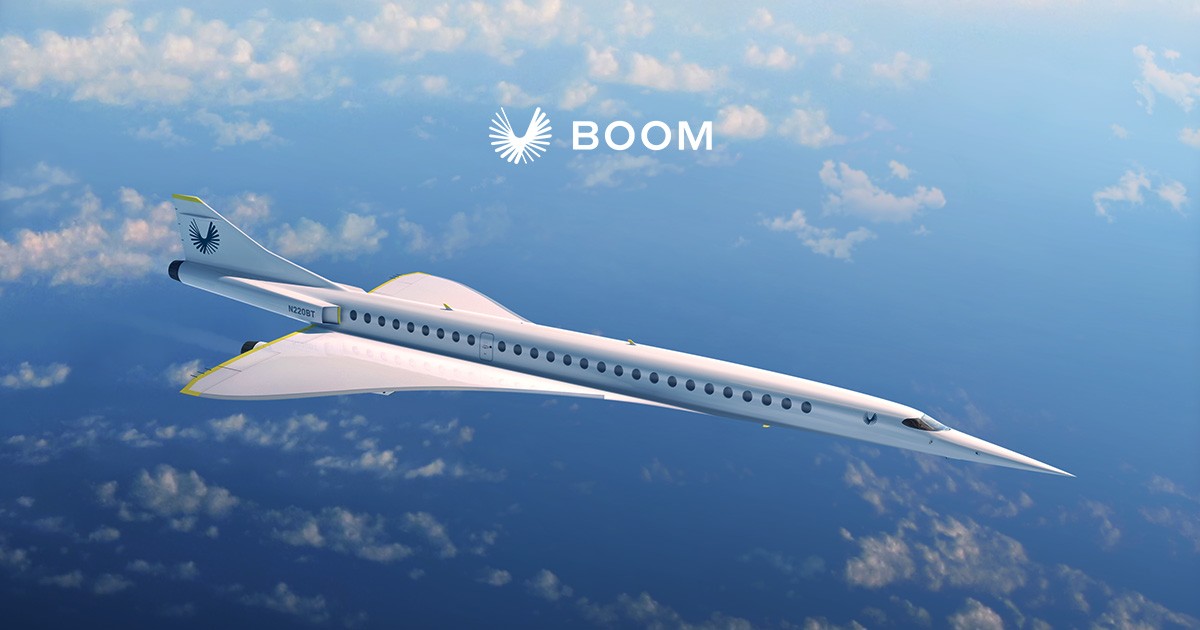The American startup Boom Technology, which is working on the creation of a new supersonic passenger aircraft, raised $ 50 million during the next round of funding, resulting in its estimate exceeding $ 1 billion, the head of the company told Bloomberg.
Funds in the amount of $ 50 million were invested by the investment fund WRVI Capital, bringing the total funding in Boom to $ 210 million. In addition, the list of investors in the startup includes the Emerson Collective fund, created by the widow of Apple co-founder Steve Jobs, Laurene Powell Jobs, Stripe co-founder billionaire John Collison, venture capital firm Bolt, and Y Combinator Continuity fund.
Boom Supersonic was founded in 2014 after its founder, Blake Scholl, sold his previous startup, Kima Labs, to Groupon, which developed the Barcode Hero barcode reader app and the TapBuy mobile payment service. “Our goal is to make high-speed jet aircraft the cheapest option,” Scholl told Bloomberg. Similar to Tesla, which started out with luxury electric vehicles and then added mid-range models to them, Boom plans to start transportation at fares equal to business class flights, and then downgrade them to economy class.
In August 2020, the British billionaire Richard Branson's company Virgin Galactic presented the concept of a supersonic passenger aircraft, which will develop a speed of approximately 3700 km/h. Also, Aerion and Spike are working on the creation of supersonic passenger aircraft. But they are thinking about business jets, and Boom is developing a 55-seat three-engine airliner that can fly 2.2 times the speed of sound.
The last passenger aircraft to fly faster than the speed of sound was the French-British Concorde. It developed a speed of 2440 km/h. Concorde flights were discontinued in 2003.
source: bloomberg.com
Funds in the amount of $ 50 million were invested by the investment fund WRVI Capital, bringing the total funding in Boom to $ 210 million. In addition, the list of investors in the startup includes the Emerson Collective fund, created by the widow of Apple co-founder Steve Jobs, Laurene Powell Jobs, Stripe co-founder billionaire John Collison, venture capital firm Bolt, and Y Combinator Continuity fund.
Boom Supersonic was founded in 2014 after its founder, Blake Scholl, sold his previous startup, Kima Labs, to Groupon, which developed the Barcode Hero barcode reader app and the TapBuy mobile payment service. “Our goal is to make high-speed jet aircraft the cheapest option,” Scholl told Bloomberg. Similar to Tesla, which started out with luxury electric vehicles and then added mid-range models to them, Boom plans to start transportation at fares equal to business class flights, and then downgrade them to economy class.
In August 2020, the British billionaire Richard Branson's company Virgin Galactic presented the concept of a supersonic passenger aircraft, which will develop a speed of approximately 3700 km/h. Also, Aerion and Spike are working on the creation of supersonic passenger aircraft. But they are thinking about business jets, and Boom is developing a 55-seat three-engine airliner that can fly 2.2 times the speed of sound.
The last passenger aircraft to fly faster than the speed of sound was the French-British Concorde. It developed a speed of 2440 km/h. Concorde flights were discontinued in 2003.
source: bloomberg.com





